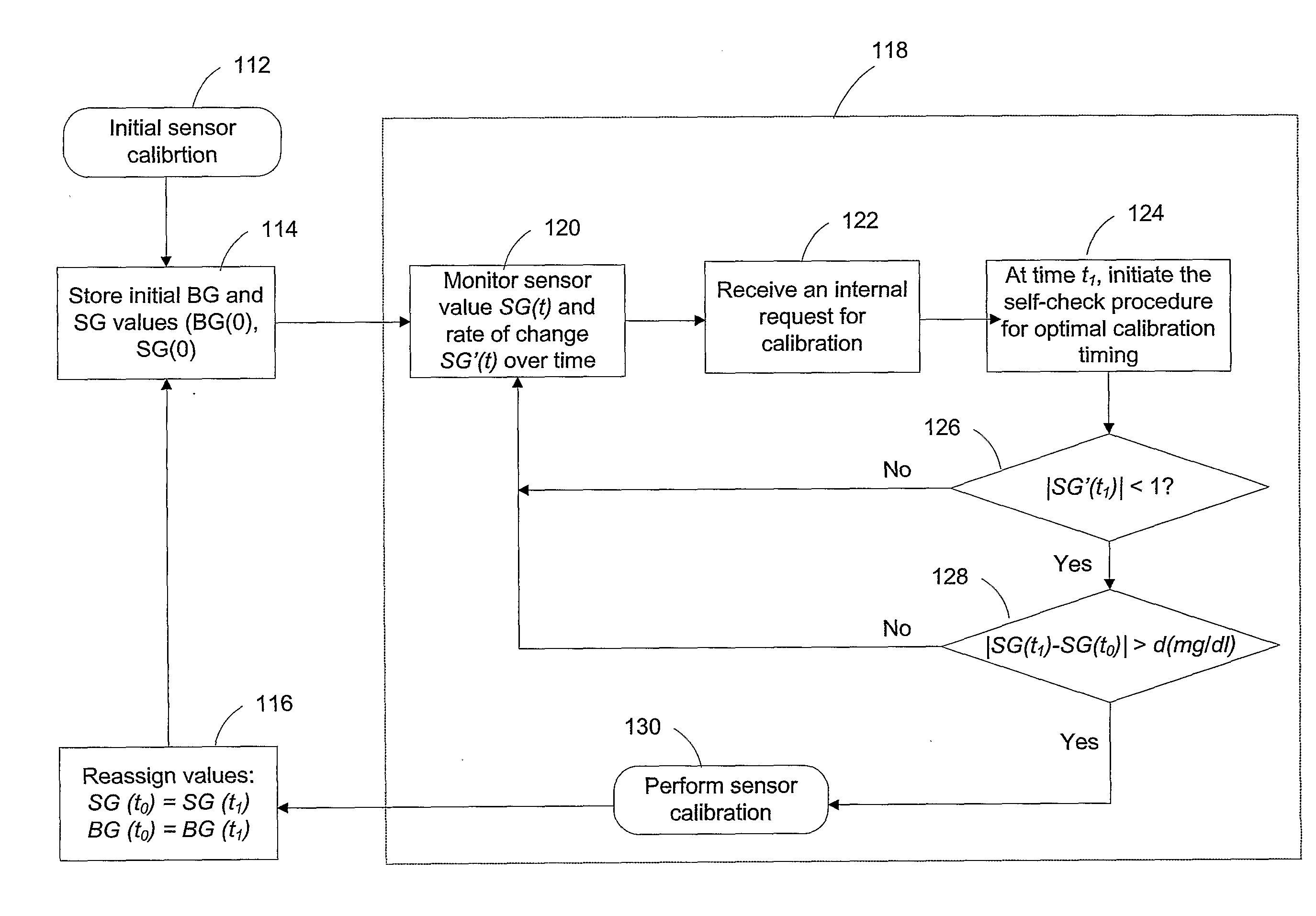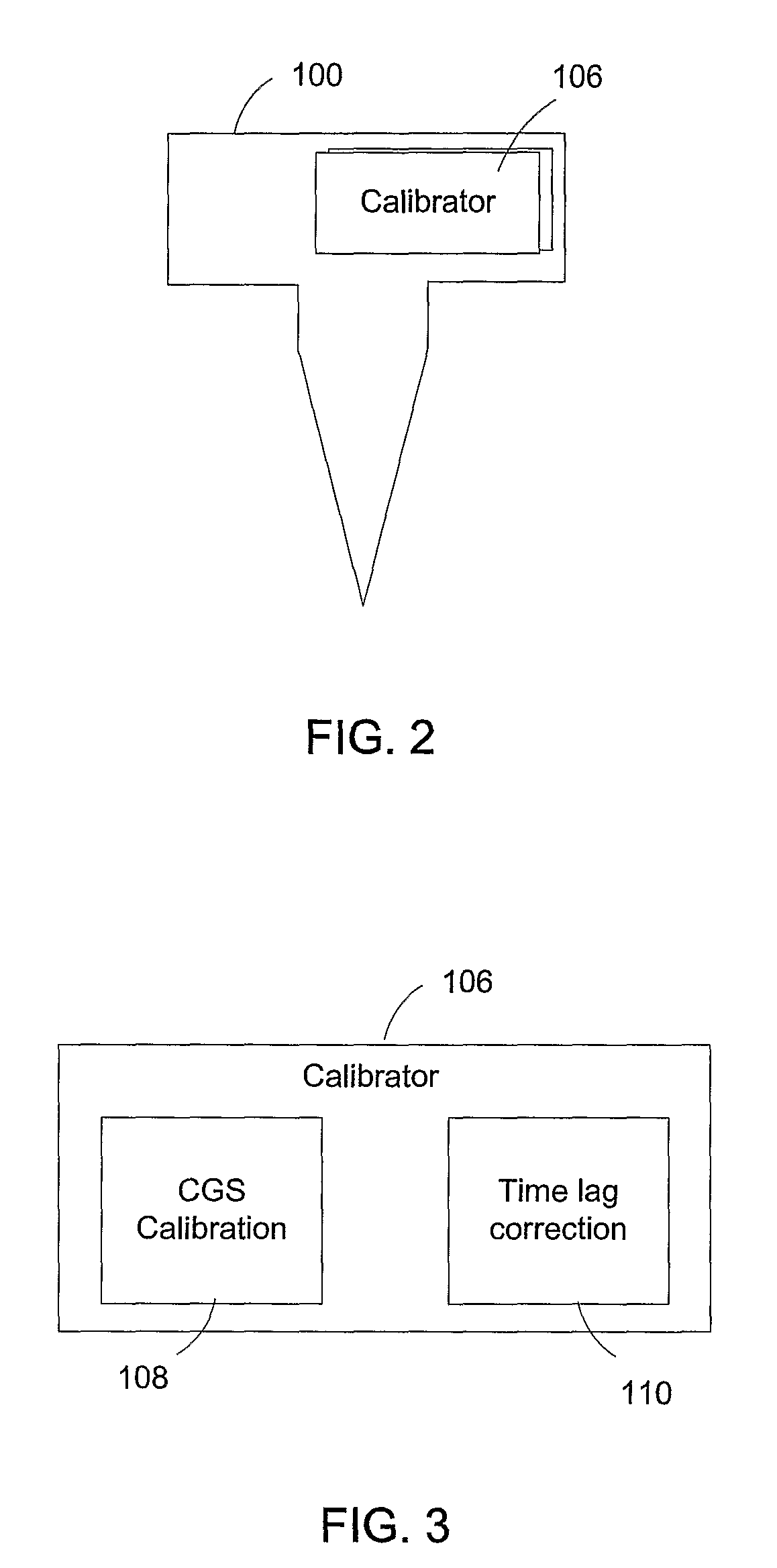Accuracy of Continuous Glucose Sensors
a continuous glucose and accuracy technology, applied in the field of continuous glucose monitoring, can solve the problems of separating the portion of bg/cgs error, difficult to accurately and reliably test the accuracy and reliability of cgs devices, and difficult to direct frequent in vivo ig sampling, etc., to improve the accuracy and reliability of cgs and improve the calibration of cgs sensors.
- Summary
- Abstract
- Description
- Claims
- Application Information
AI Technical Summary
Benefits of technology
Problems solved by technology
Method used
Image
Examples
Embodiment Construction
[0029]This invention provides a method and device for improving accuracy of continuous glucose sensors by improving the calibration of the CGS or by remedying errors arising from the physiological time lag between BG and IG, or a combination thereof. In view of many possible variations within the spirit of the invention, the invention will be discussed in the following with reference to specific examples. However, it will be appreciated by those skilled in the art that the following discussion is for demonstration purposes, and should not be interpreted as a limitation. Other variations without departing from the spirit of the invention are also applicable.
[0030]Inaccuracies of most current CGS devices are mainly attributed to poor CGS calibration, physiology time lag, and random errors. To reduce the inaccuracy of the CGS, an improved calibration procedure is proposed. The reduction of inaccuracy can alternatively be achieved by remedying the error related to physiological time lag...
PUM
 Login to View More
Login to View More Abstract
Description
Claims
Application Information
 Login to View More
Login to View More - R&D
- Intellectual Property
- Life Sciences
- Materials
- Tech Scout
- Unparalleled Data Quality
- Higher Quality Content
- 60% Fewer Hallucinations
Browse by: Latest US Patents, China's latest patents, Technical Efficacy Thesaurus, Application Domain, Technology Topic, Popular Technical Reports.
© 2025 PatSnap. All rights reserved.Legal|Privacy policy|Modern Slavery Act Transparency Statement|Sitemap|About US| Contact US: help@patsnap.com



